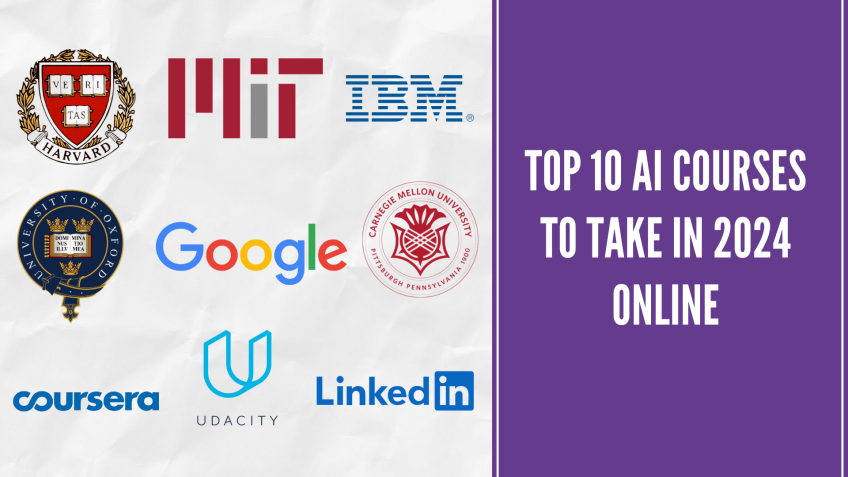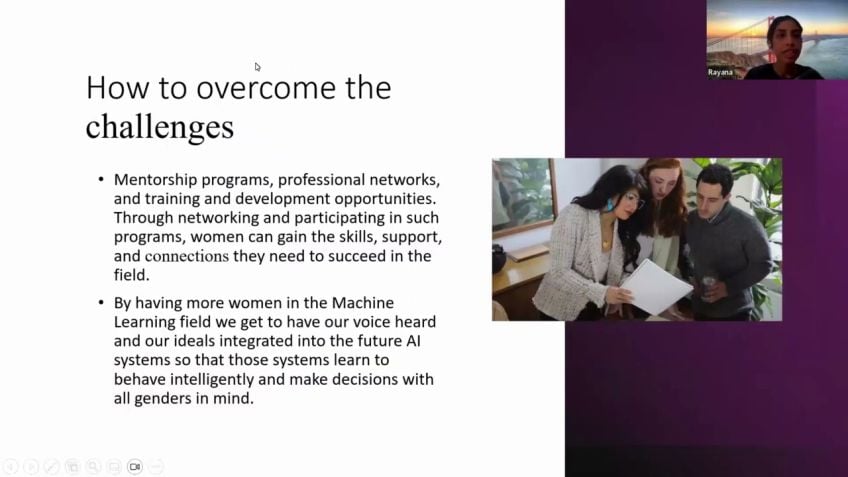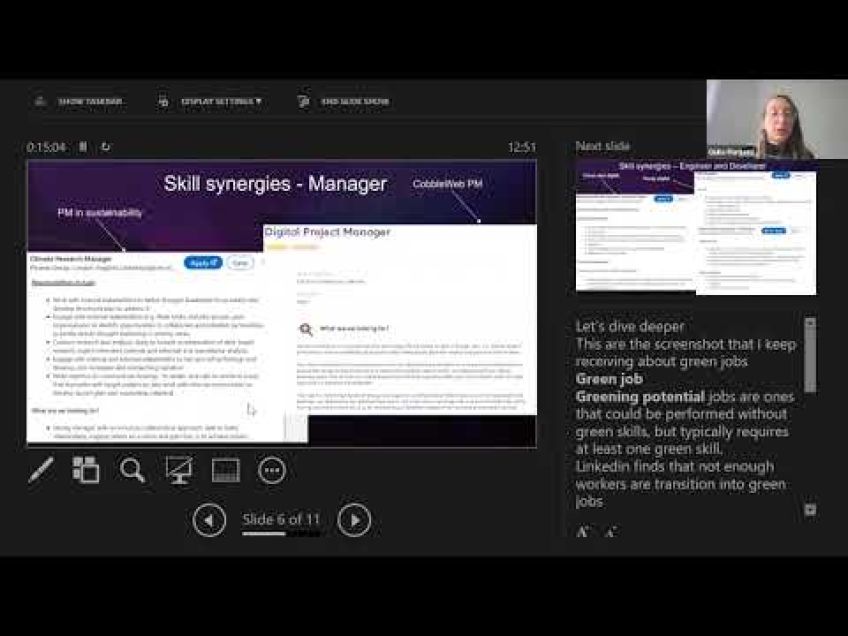Maria Dyshel - Making the World Better, One Artificial Conversation at a Time: How Chatbots Are Powering the Social Impact Sector
Changing the World One Artificial Conversation at a Time
Welcome to our discussion on the transformative impact of AI-powered conversational platforms on social impact organizations. This piece is intended to offer a glimpse at the intersections of technology, social impact, and human conversation. We'll explore how chatbots and AI are revolutionizing the communication landscape—changing the world one chat at a time.
My Journey into AI and Social Impact
I embarked on my professional journey as a computer science student aspiring to contribute to society. Balancing my technical pursuits with a dedication to social causes led me to an intriguing crossroads where two distinct worlds—emerging conversational AI technology and impactful social work—intersected.
Tangibly
My start-up, Tangibly, was founded with a mission to harness the immense potential of artificial intelligence (AI) in the service of solving humanity's most pressing issues. As the Tangibly team grew, we realized we needed an inclusive, multi-faceted approach to unleash AI's potential for social good. Today, Tangibly's work spans AI consultancy, bespoke solution crafting for nonprofits and social enterprises, running an internship program to foster a new generation of prosocial AI professionals, and creating a variety of chatbot and conversational AI solutions.
What is Conversational AI?
Conversational AI is a technology that allows humans and computers to communicate in a human-like manner. It's performed either through text-based chatbots or verbally via virtual assistants like Alexa or Siri. Recent years have seen an explosion in the use of chatbots due to their ability to engage vast audiences, cater to a rising preference for texting over voice calls, and fulfill our insatiable need for immediate responses.
The Rise of Chatbots
While the first chatbot dates back to the 1960s, the past five years have seen a significant increase in their usage. Today, there are around half a million chatbots on Facebook alone, as their applications continuously expand across customer service, team operation, HR management, mental health support, and education.
Making Chatbots Prosocial3>
At Pharma, I grappled with a question—could chatbots be harnessed in the service of underserved populations? As it turns out, chatbots are indeed filling gaps in the commercial sector and are supporting numerous efforts to drive social impact along three primary avenues—engagement, support, and service.
- Engage: Chatbots like 'Maya' are making significant strides in keeping audiences engaged with interactive content that educates them on critical social messages.
- Support: Chatbots like 'Cindy' have been instrumental in providing support for individuals grappling with mental health issues, abusive relationships, and feelings of imposter syndrome.
- Serve: Chatbots are proving to be excellent tools for delivering reliable and clear information in matters of public concern, such as COVID-19 regulatory guidelines for small businesses.
Building Your Own Chatbot
Building an effective chatbot involves understanding your users, designing the solution, implementing it in an iterative fashion, and finally piloting the solution before scaling. Several do's and don'ts can guide this process, including tailoring your chatbot's offerings to your user's needs, avoiding an overambitious feature list, and continually refining and adapting the bot based on use.Pattern recognition, a framework to identify trends, can even lead to users personifying chatbots and enhancing engagement.
In Conclusion
Chatbots are more than mere marketing tools for big brands. They also possess the power to help vulnerable populations in unprecedented ways. Building a good chatbot isn't easy, but with the right approach and steadfast commitment, it's an avenue that promises immense potential for positive, far-reaching social impact.
Thank you for joining me in this exploration of unleashing AI's capacity for social good!
Video Transcription
And thank you for joining this session and I think we're ready to kick it off. So, hi everyone. Welcome to Women tech. I'm super excited to be with you here. And today we are going to talk about changing the world one artificial conversation at the time.Basically how chat bots and conversational A I are helping social impact organization to do their important work. Just a second. So before we dive into that important topic, what I want to take you through is my personal journey of how I came to be at this intersection of this emerging new technology of conversational A I and social impact. So my story starts as a lot of professional stories. I was a computer science student. Um But since my very early days, since my first university days, I was always socially active. So while I was doing my bachelors and master's in Hebrew University in Jerusalem and then developing algorithms and mobile and Google and then managing A I project in Sanofi, I was always doing something uh On the side, I was running environmental campaigns. I was building technology for underserved populations with engineers without borders. I co founded a nonprofit and I ended up traveling to India and helping a local organization help rural nurses with a mobile application. So I was living this double life for more than a decade actually.
And it always bugged me. Isn't there a way to do what I love for the causes that I find important? Isn't there a way to take something that I'm good at and use it to improve the lives of those that were less lucky than I am. And this is why about two years ago, I took the leap and tangibly, I came to be so tangibly, I started with a simple mission, how we can put artificial intelligence, this powerful tool that's transforming the whole industries into those into the hands of those that solve humanity's most pressing problems.
And you know, this was the original idea. But one of the beautiful things about humans is that we collaborate. And as I met my co-founder Hobson Lane and my wonderful team, I realized that you can't just address just one part of it that the solution, the way to make E I prosocial and serving the prosocial needs, needs to be more holistic and complex. So today, the NC PE I is in fact three things we still do. A lot of consulting. We help nonprofits and social businesses with custom solutions and A I strategy. We also build our own solutions inside our innovation hub. And finally, we are on an internship program that allows us to create a new generation of A I professionals that understand the basics of what it means to be prosocial and how to create an A I, that's a prosocial force. So we work in variety of technologies. We help for a lot of our customers. What we do is we help them just understand how A I can be good for them and for their business. And for the nonprofit, we build custom solutions using data science and machine learning. And a big part of what we do are chatbot and conversational A I. So and well, this is what we are going to focus on today.
And before we dive into, you know, what actually happened, how organizations actually use conversational A I, let's just give a brief definition of what it actually is. So to make it simple conversational A I is this technology that allows people and computers to communicate with each other just as humans communicate between themselves, using human language and natural back and forth interaction that we usually call conversation. You can usually buy done in two ways, either it's done through text where you basically message with an application called chatbot. And the same way you would message with a friend or with a family member or it can be done by voice when you actually talked with your, with your virtual assistants through uh smart speakers such as Alexa or Google Home or through an app like Siri and one of the things that we saw in the last I would say five or six days is really an explosion of chat bots.
In the first chatbot was created somewhere in the sixties. But until five years ago, there were mostly a gimmick, something that people would play with something that would show how far we got with the eye. But lately we've, we've seen chatbots almost everywhere and there are a few reasons for that one of them. And probably the biggest one is that currently, there are as much as 5 billion users on messaging platforms every single month. That's the biggest playground and the biggest audience you can imagine to the level that some in some underdeveloped rural areas, people won't have access to electricity or running water, but they will have access to phones, even simple phones and they can message another important factor is that the younger generations increasingly turn to texting as a means of communication.
So most of us would prefer texting rather than picking up a phone and making a phone conversation. And finally, as the digital technology is penetrating deeper into all the areas of our lives, we are also becoming more impatient. So more and more we expect the right answers the right information right there immediately at the tip of our fingers. So all the combinations of all of that calls for the solution that's different from all that we had before. And then one of the reasons why chat bots came in and, and solve all these needs is just our human nature. So we are wired as humans to communicate through conversations from the ancient times to medieval times, to the modern times. A lot of things changed for us, the way we commute, the way we live, the way we cook. A lot of things are really different, but we still exchange information and ideas. We still bond and organize using human language and using this interactive turn based thing that we call human conversation. And this is why it's so powerful. One more thing that really served chat bots in the recent years is a phenomenon called paradol. And what is paradol?
This, you know, scary big word, just look for a second at this image and tell me what you see and I actually look at the chat to make sure that you still hear me. Yeah. So I see that people are seeing a smile, people are seeing uh people are seeing a basically a humanoid face. And the reason why it's happening is because as humans, we are wired to see human faces in human shapes or humanoid shapes everywhere. We see them in the clouds, we see them on the surface of Mars, we saw it everywhere because this is how our brain discovers patterns in the surrounding world. So when we encounter something like a chatbot, something that as you say, walks like a human and talks like a human, our brain thinks that must be human and we make this additional step of personification and we start treating chatbots as human. Now, it's for sure, it's a big challenge. Um It's for designers that need to design those conversations, but it's also a beautiful opportunity to take this most powerful thing, which is human conversation and use technology to scale it and help it and help billions of people around the world to have access to better information and better support.
So there is no wonder that with all this being said, the amount of chat bots have just exploded in the last five or six years. On Facebook alone, there are about half a million chat bots and it's growing every day. So we have chatbots in customer service in sales marketing, uh in operating our team in operating our DEV ops in managing hr we have bots that support us during mental health. We have educational chat bots. There are really a variety of chatbot applications out there. And in my recent role in Pharma, I dealt with a lot of these sales and customer service spots, but it always bugged me. Can we take this technology and can we really make it serve the underserved people that need more support than others, people that need more help than others. And today we're going to to look and see that actually chatbots are not just for the commercial sector and they actually help quite a lot, a lot of organizations that are actually trying to make the world and our planet better. So we will talk about the some of the very important functions that chat bots perform in um helping social impact organizations. And this is engaging, supporting and serving these organizations constituents.
We're going to look at an example for, for each case study and but there are many more examples that you'll be able to explore on your own. So first let's start with engage. So the challenge that we are dealing with is nontrivial and acute. About 35,000 Nepali girls and women between five and 18 are trafficked from Nepal to India every year. Now, it's a horrible number and it sounds horrendous especially to us in the West. But for teenage women and girls and boys living in Nepalese villages, this is just life, right?
They're just living their life and they run into these difficult situations that they don't know how to handle and it's a difficult conversation to talk about because let's admit it. Safety is boring. No one likes to talk about safety. Think about what was the last time you read a safety booklet? Was it something that excited you or was it something that engaged you? So the challenge is how we take this boring subject of, of keeping yourself from trafficking and make it accessible. So what we did with an organization called Plan International is that we build a chatbot called Maya, which what it does, it takes these topics of keeping yourself safe and safe migration for work and it makes them interactive. So all the informational part inside my are interactive as are. And it also has quizzes and choose your own adventure stories. So it really makes this content not only accessible but also memorable. And nonprofits have realized quite a while ago that this factor of interactivity is something that really can help you get the message through. So today, there is a variety of solutions that are built by nonprofits everywhere that can help you empathize with the person who is learning disability or educate you about, about your body and how to keep yourself healthy or even talk to you about gender bias in A I.
So that's the first use case, how we engage and educate people with messages that we want to be remembered. The next use case is about supporting. So for all of us, there are a lot of situations in our life when we just need to talk to another human. But unfortunately, it can be difficult. Perhaps it's a touchy topic on which you are not ready to discuss with, even with your closest friends, maybe this conversation actually needs to be with a professional therapist or couch. And realistically not all of us can afford this sort of support.
So this is an opportunity for chat bots to really step up. Now, this is just an example of another bot that we build that we call Cindy, whose goal is to help women and priority entrepreneurs and um and professionals to deal with this feeling of imposter syndrome, this minimization that you do of your own successes, achievements and talents and constantly feeling as if you're a fraud and they're about to find out that you're actually not good as you, as good as you are.
So the solution here was, you know, ideally you would want to talk about it to your coach and therapist. So we can't quite give you that right. It's not scalable to the billion of users out there. But what we can do is that we can use this interface that you already personify and make it reflect and mirror to you your own thoughts. So it helps you basically to examine and refrain those thoughts that are holding you back. And this is just one example again of what chat bots can do so they can support you in all kinds of conditions that you're living with or maybe um dealing with abusive relationships. Um And there is really a variety of things that um you can use chatbots where you need the human touch. And then finally, let's talk about service. And this is also a very important part where we don't necessarily need a human and maybe we don't necessarily need to be super engagement. We just need information, we need information, we need clear instructions and one good example is one of the bots that we've launched very, very recently. And the idea is how can small businesses can cope with this new regulation that relates to COVID-19.
There are a lot of regulations now that businesses like restaurants need to comply with. And it's a and as every regulatory system, it's pretty difficult to navigate. So what chatbot allow us to do is to really provide the step by step instructions and situation relevant information so that people will um so that people will receive the information that's relevant to them. So this is just uh another bunch of examples of how um how chat bots can help you from applying to food stamps, to migrating for work, to reporting your experiences uh from sexual assault to bribery. So I hope that by this point, I inspired you a little bit and I made you realize what a powerful tool we're having at the tip of our fingers. And hopefully by now, you want to, you're asking yourself, how am I going to go ahead and build my own chatbot? So this is just a gist of how Chatbot project is done. You start by really understanding your users researching their needs and understanding what problem you're solving.
You go, you go ahead and design the solution using a variety of conversational design tools. You then iteratively in an agile manner, uh implement your solution. And one of the crucial points here is really the iteration part because chat bots are inherently give you user much more freedom than all the graphical solutions and graphical interfaces ever done. They allow your users to um to put anything in the textbook from a curse uh to a thank you to any to any queries that maybe you're not able to address. So the importance of getting your chatbot in front of your users and repeatedly improving their experience by seeing how are they actually trying to interact with your solution is more crucial than with any other digital tool. And finally, what we usually do with the organizations that we work with is that we pilot the solution for, for some period of time, we try to understand whether the solution actually worked. And was it a good solution to the problem that we were facing? And then the process of scaling is also um iterative, iterative um and keeping, keeping your head on the post all the time. So finally, here are a few chatbot D OS and don's I know that we're coming to the end of their time.
So I just want, I will let you stare at this just for a second. There are a lot of things that we see that we saw already just understanding your users investing in your chatbot content, integrating and improving. And also one of the important things that you shouldn't do is try to do too much. So don't think that you can build a Siri um in, in a few days. Understand what is it that, that your child but should be able to do and do it really, really well. And finally don't leave it alone. A see your childhood as a living being, it constantly needs a bit of upbringing and a bit of corrections as it interacts and encounters new and new situations that it needs to cope with. So I hope that you took from this session today that first of all chatbots are not just for companies and brands that they can engage, support and serve the most vulnerable corporations among us. And then finally, here, it's not necessarily easy to build, it's easy to build a chat bot, but it's not easy to build a good one. So there are a couple of practices that you need to implement in order for chatbots to bring real impact.
Thank you so much for listening and enjoy the conference.





